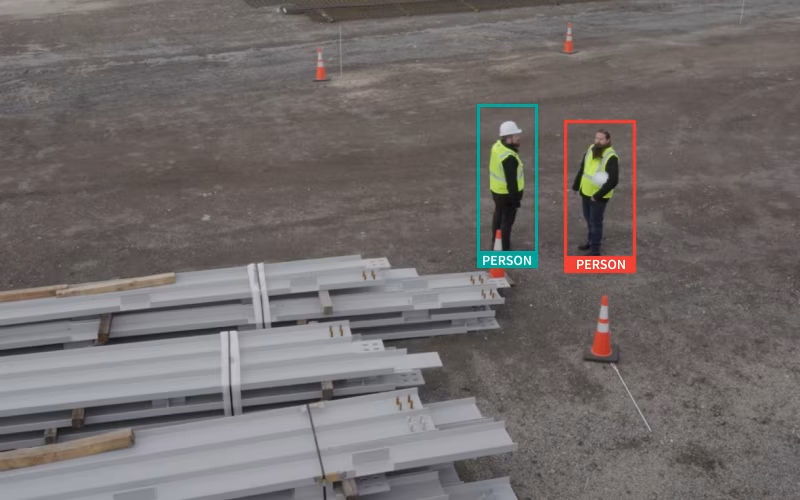What is Organized Retail Crime?

Organized retail crime hurts more than just the retailers who they steal from. It also affects customers and the prices they pay for goods.
When I read the letters ORC, I read it as a single word—orc. That’s right—I think of the evil little creatures that make up Sauron’s army in Lord of the Rings. (But hey, what can I say? I was an English major.) Apart from fictional goblins, ORC stands for something that is equally ugly in real-life—organized retail crime.
What is Organized Retail Crime?
Organized retail crime is a type of theft. It is not new. Methods, consequences, targets, and costs have changed, but organized theft is a common problem. In fact, according to the National Retail Federation (NRF), in 2020 it cost an average of $719,548 per $1 billion in sales.
ORC is professional shoplifting or other theft committed by two or more people. It is an organized crime ring that typically targets similar products and retail chains at a local, regional, national, or even international scale. They use well-planned, proven moves that result in billions of dollars of losses each year. They move from store to store, across counties, and even to multiple states.
Once the goods are stolen, the thieves resell them. This is often extremely sophisticated and can even include merchandise repackaging, fencing operations, and illegal wholesale. Some even use different businesses as a front for their illegal activities. For example, a man arrested for ORC in Massachusetts used his video store as a front for an entire thievery operation that bought in thousands of stolen items and resold them online.
The members in these rings are well trained and are not typical shoplifters. They are professional thieves who don’t steal for personal use. Instead, they make a profit on the items they steal.
What is Stolen?
ORC theft can target a wide range of goods—everything from razors and beauty products to baby formula. They target high-value items that are easy to hide and sell online. Most of the products are small and easy to grab without triggering in-store alerts. In fact, it is hard to narrow down which items they target because it is extremely diverse. However, most of the target items feature these characteristics:
- High-value and/or high demand
- Easily accessible
- Easily concealed
- Widely available
- Easily sold/converted into cash
Items like cosmetics, pharmaceuticals, diapers, and energy drinks are small and accessible without employee assistance. Traditionally, these types of items are expensive and have a wide demand.
Why it Matters?
Obviously, losing billions of dollars is a massive cost for retailers. But retailers don’t just absorb the cost of lost goods. They cannot afford to. Instead, they have to raise prices for their honest customers. In the case of supermarkets, their profit margins are so low (normally between 1% and 3%) that it is extremely hard to recover the cost of stolen goods. (Keep in mind, there is a wide range of categories within retail, each with different profit margins. Some high-end clothing retailers or building supply retailers have extremely high, healthy profit margins. I am referencing supermarkets since that is where most of the products targeted by ORC are found.) For example, if a supermarket has a profit margin of 1%, they will have to sell $100 for every $1 worth of stolen inventory. So, if the stolen item was worth $10, they would have to sell $1,000 worth of merchandise just to make up for what was stolen.
Theft makes retailers less competitive because it lowers profits and forces them to increase prices to stay in business. Research from Rutgers University estimates that in 2012 retailers had to mark up their products by 10–15% because of theft. That means you, as an honest customer, pay the price of shoplifting and ORC.
An even greater concern caused by ORC is safety for customers and employees. According to a survey conducted by the NRF, 65% of retailers saw an increase of violent and aggressive behavior from ORC gangs in 2020. Employees deserve a safe workspace and customers need a safe place to shop. Otherwise, they will take their business elsewhere. The increase in violent behavior puts lives at risk and that is a cost that is too high to pay.
What Can Be Done?
Retailers have to be vigilant. They face an ever-changing battle against shoplifters and ORC gangs. Adding security and other loss prevention measures is the only way to battle this threat. However, retailers still need to balance their budget and customers’ level of comfort. Retailers can’t afford to spend too much on security, but they have to put some money towards it. Nor can they drastically restrict their customers coming and going from the store. Furthermore, some security measures, like guards and cameras, can make customers uneasy when they are perceived as excessive. But if retailers do nothing, they will quickly go out of business. That’s where the balancing act comes in.
LiveView Technologies (LVT) has proven to help decrease shrinkage while increasing customers’ feeling of safety. Our mobile security units are stationed in parking lots and help deter criminals through cameras, lights, two-way speakers, and alerts. In fact, one national retailer reduced internal shrinkage by as much as 62% by placing LVT Units in their lots because they deterred criminals from ever entering the store. Furthermore, customers and employees like the security the units give them as they come and go in the parking lot. A different retailer noticed that customers and employees, particularly females, liked to park next to the LVT Units.
LVT offers an inexpensive, reliable security solution for retailers. If you are interested in learning more about LVT and our use cases in the retail industry, download this industry use case doc.



